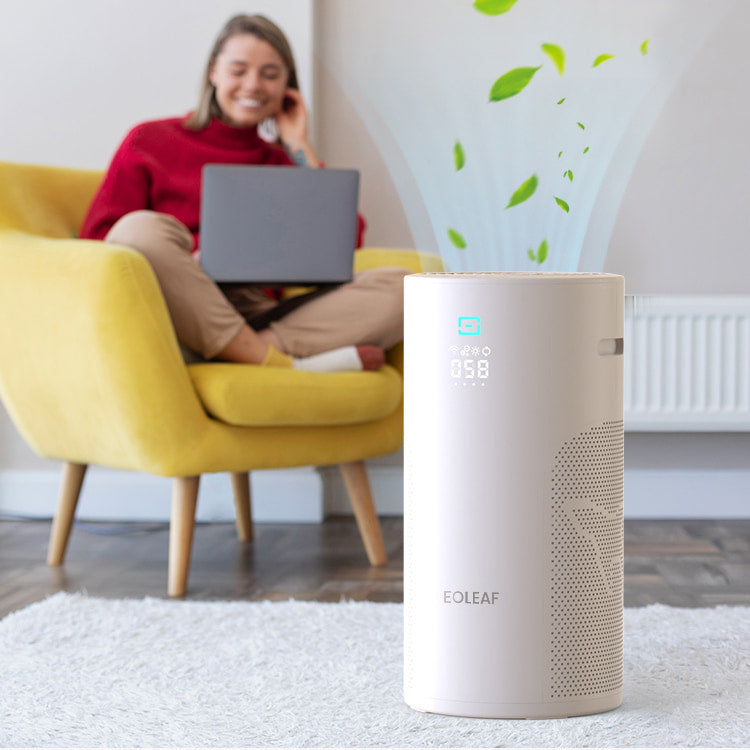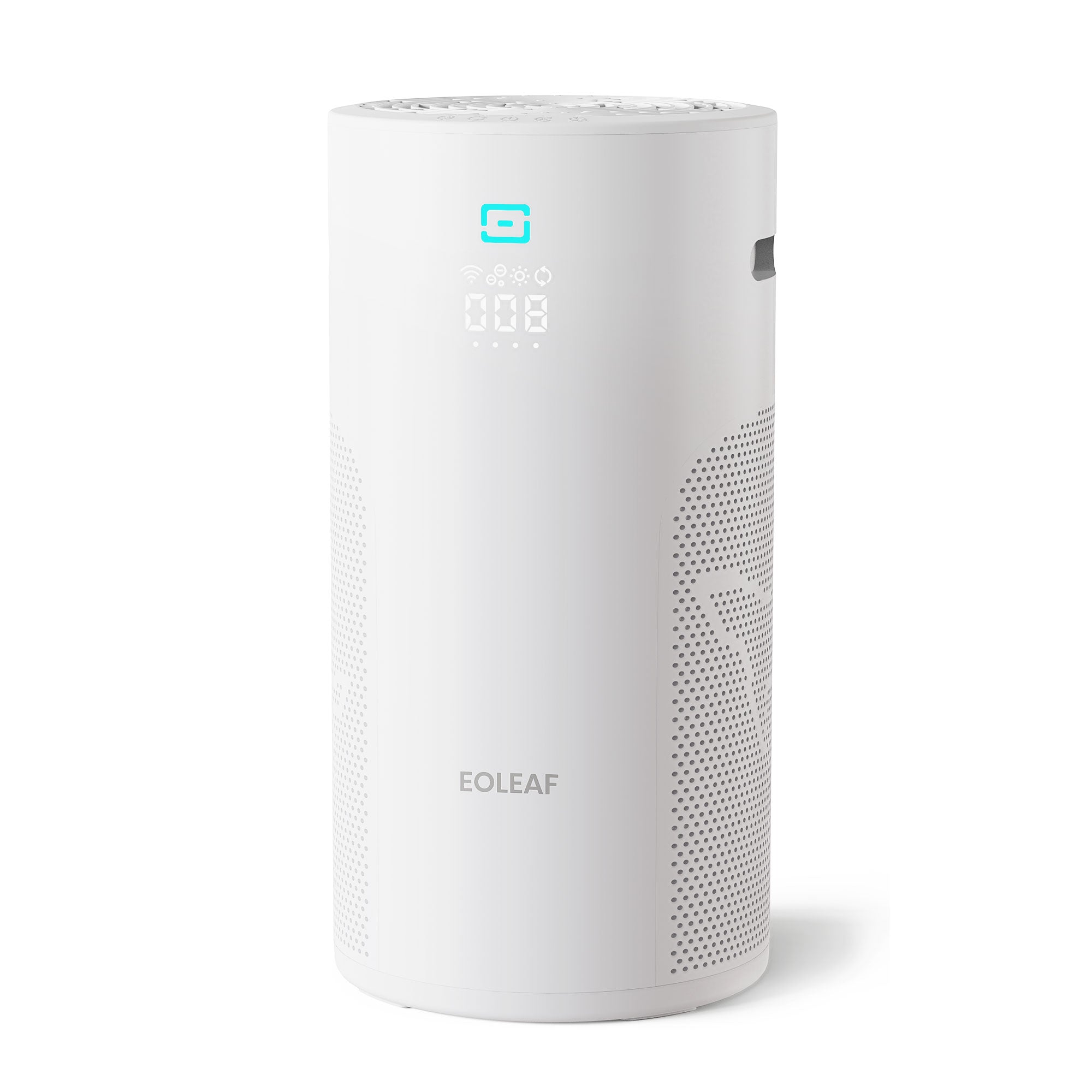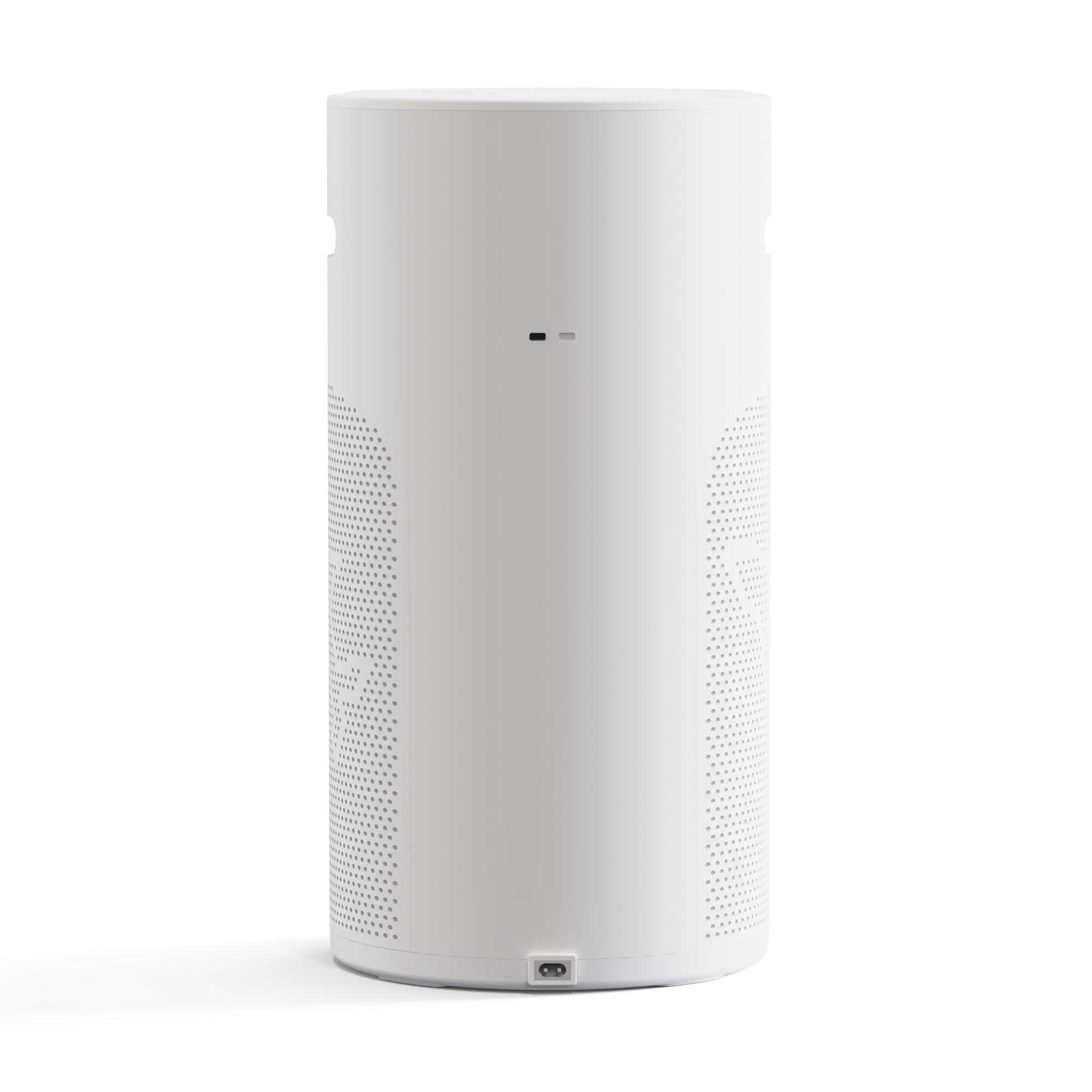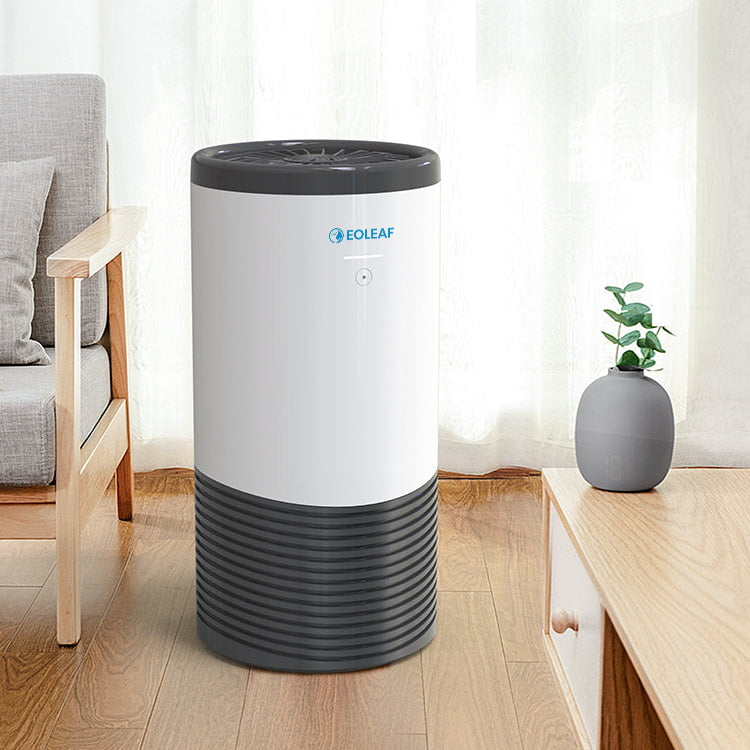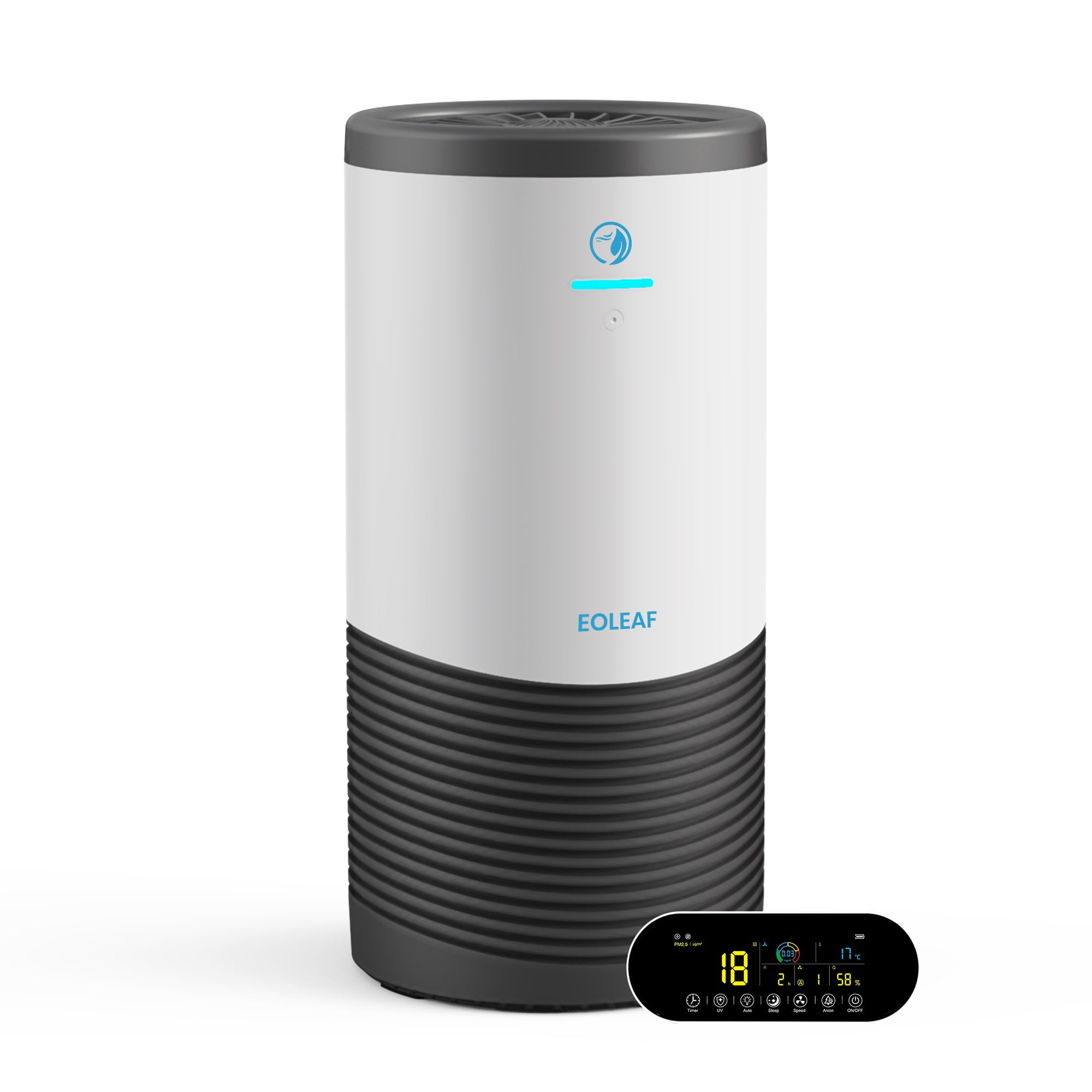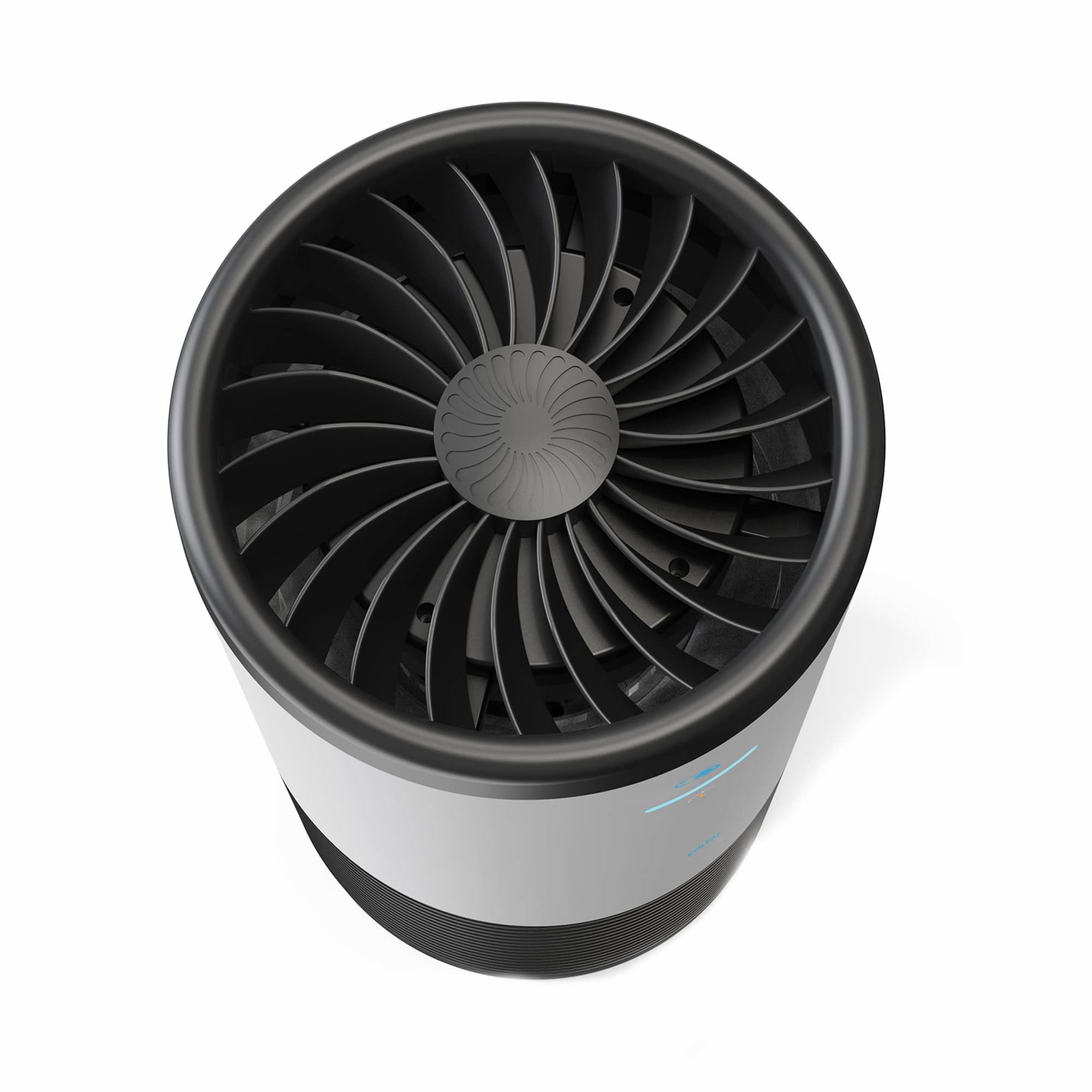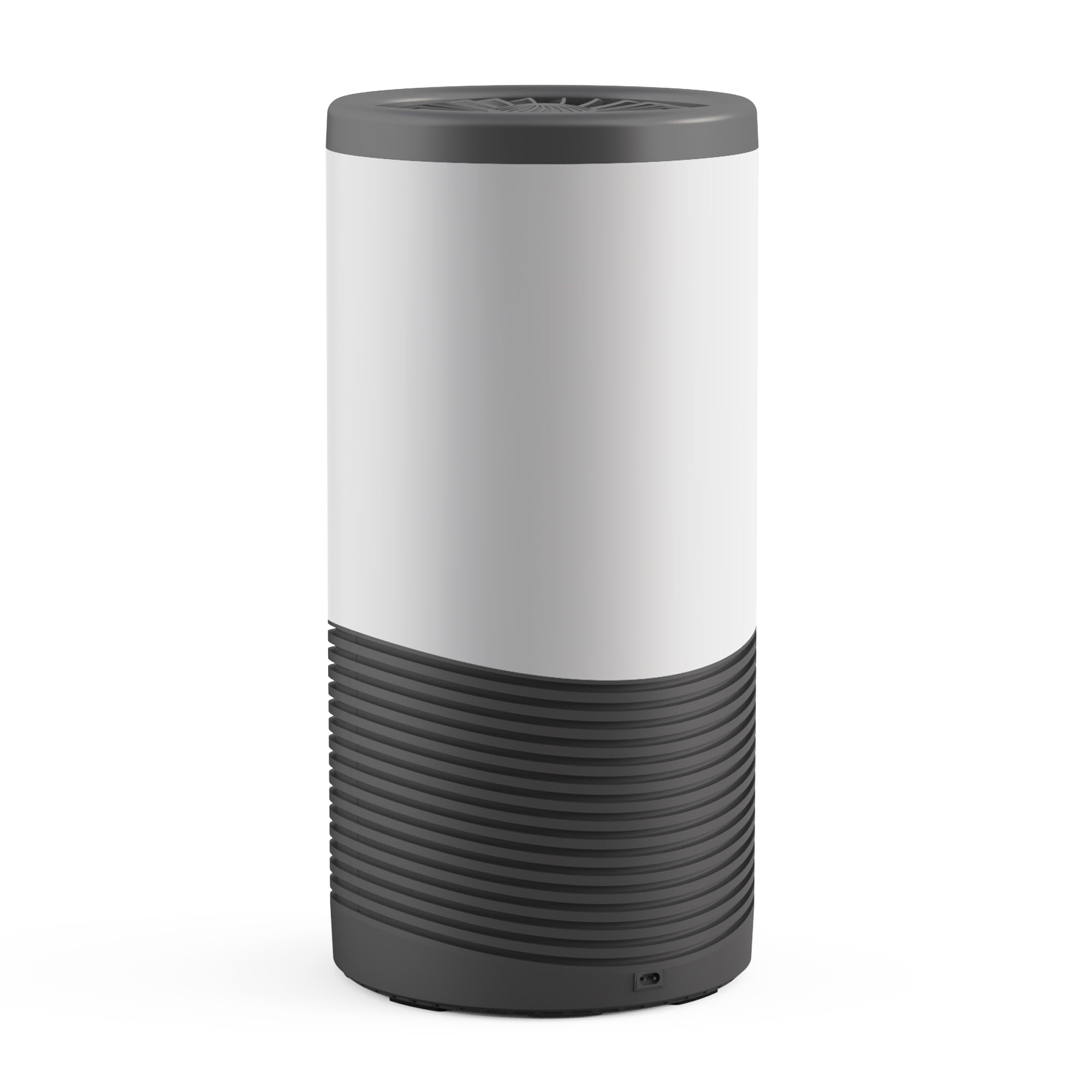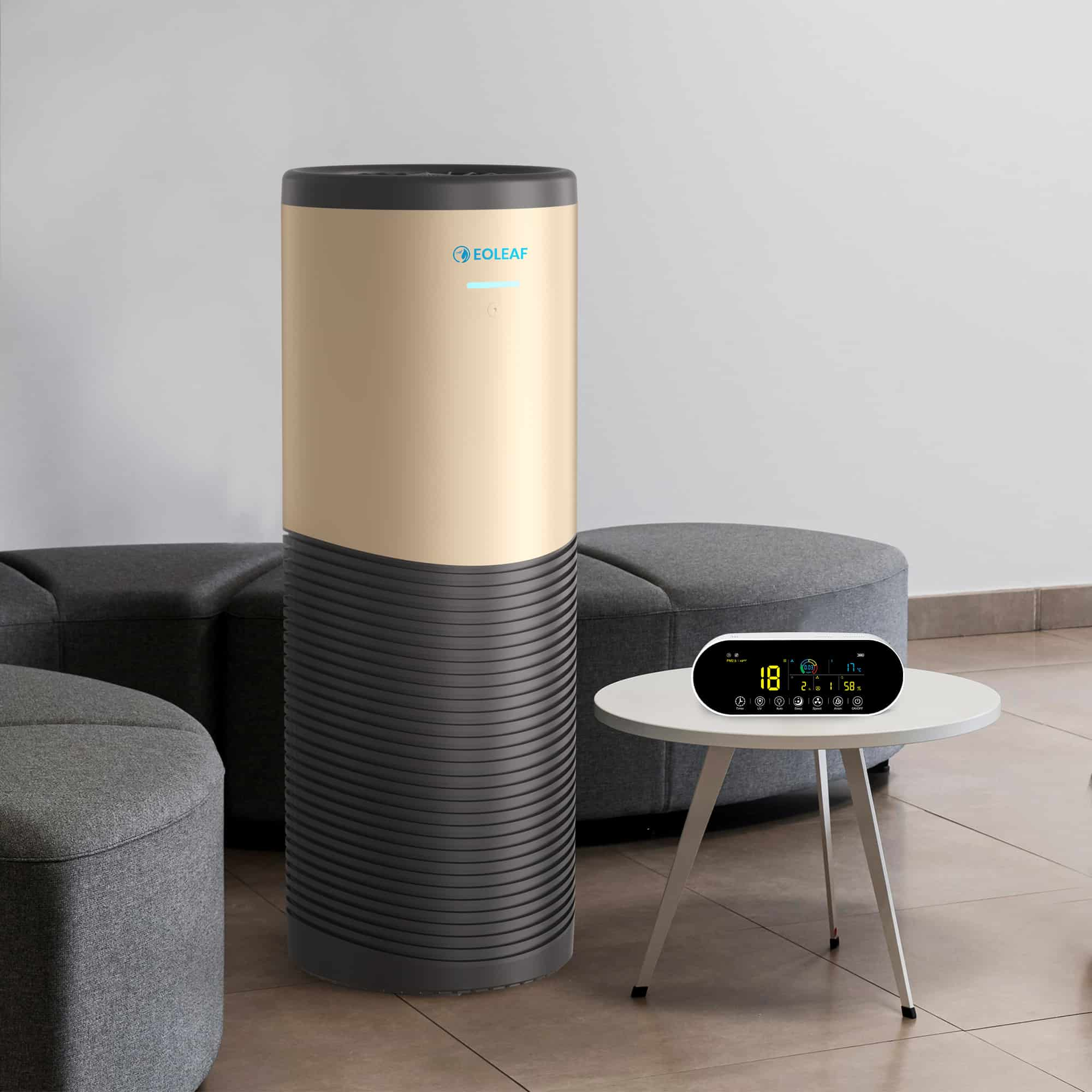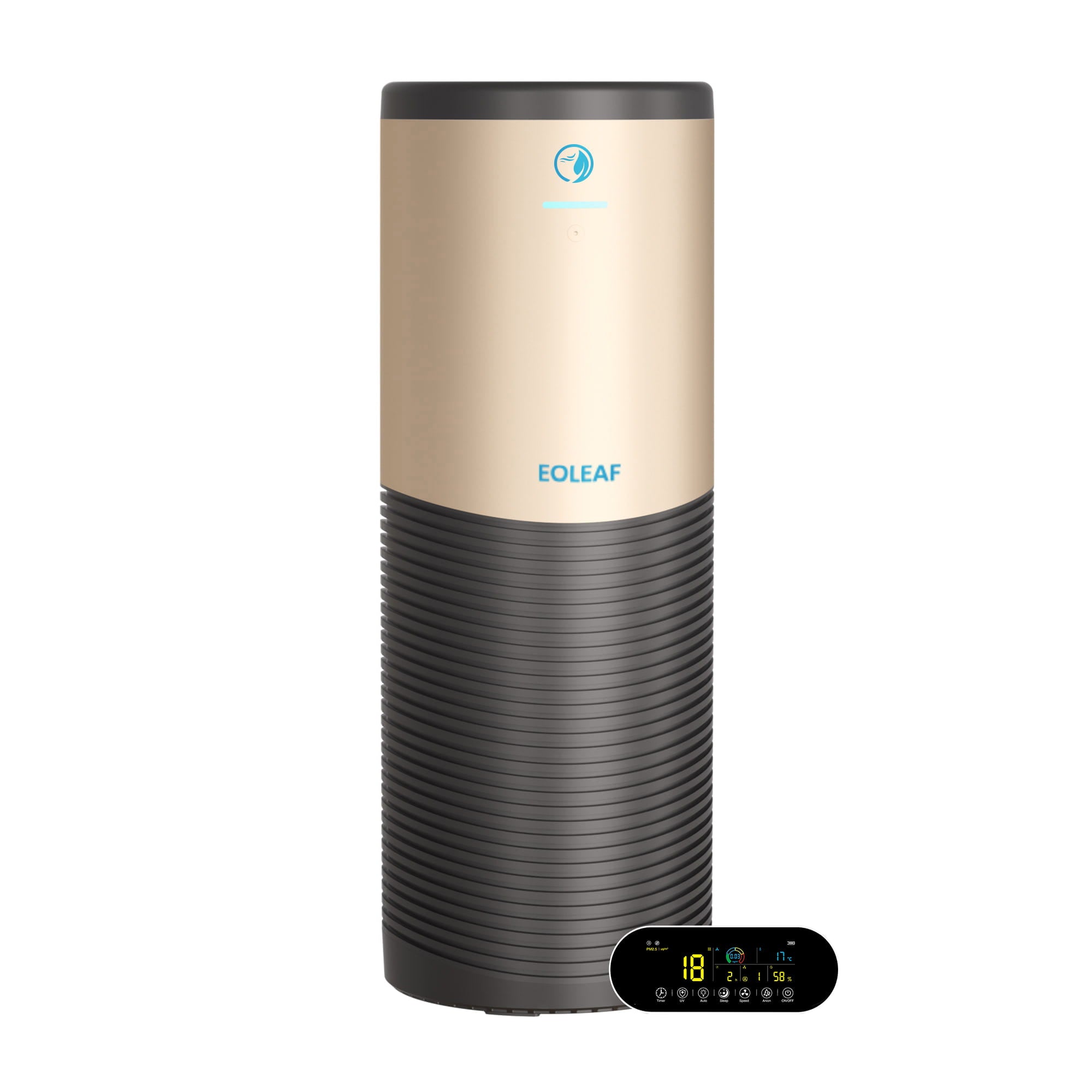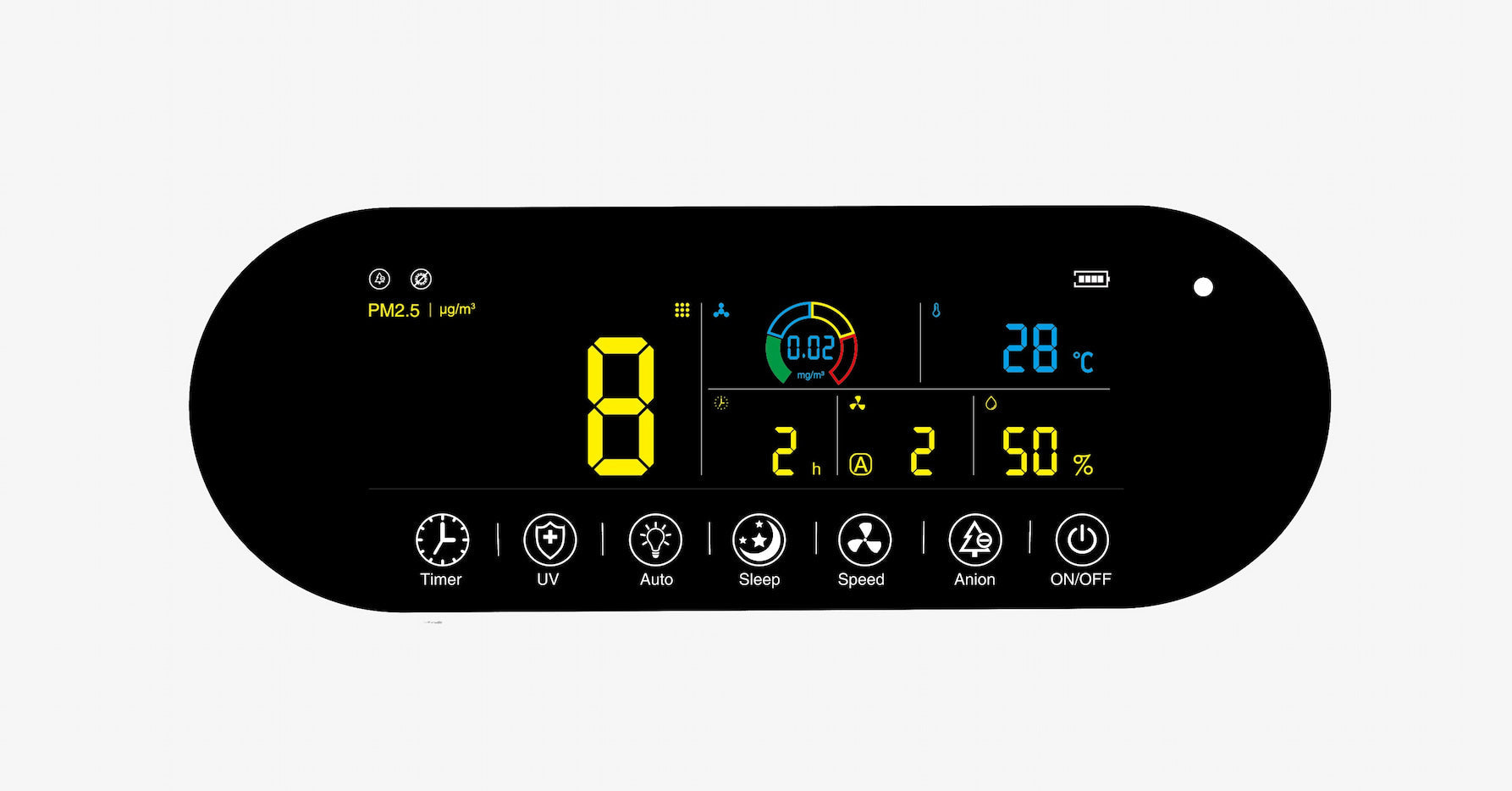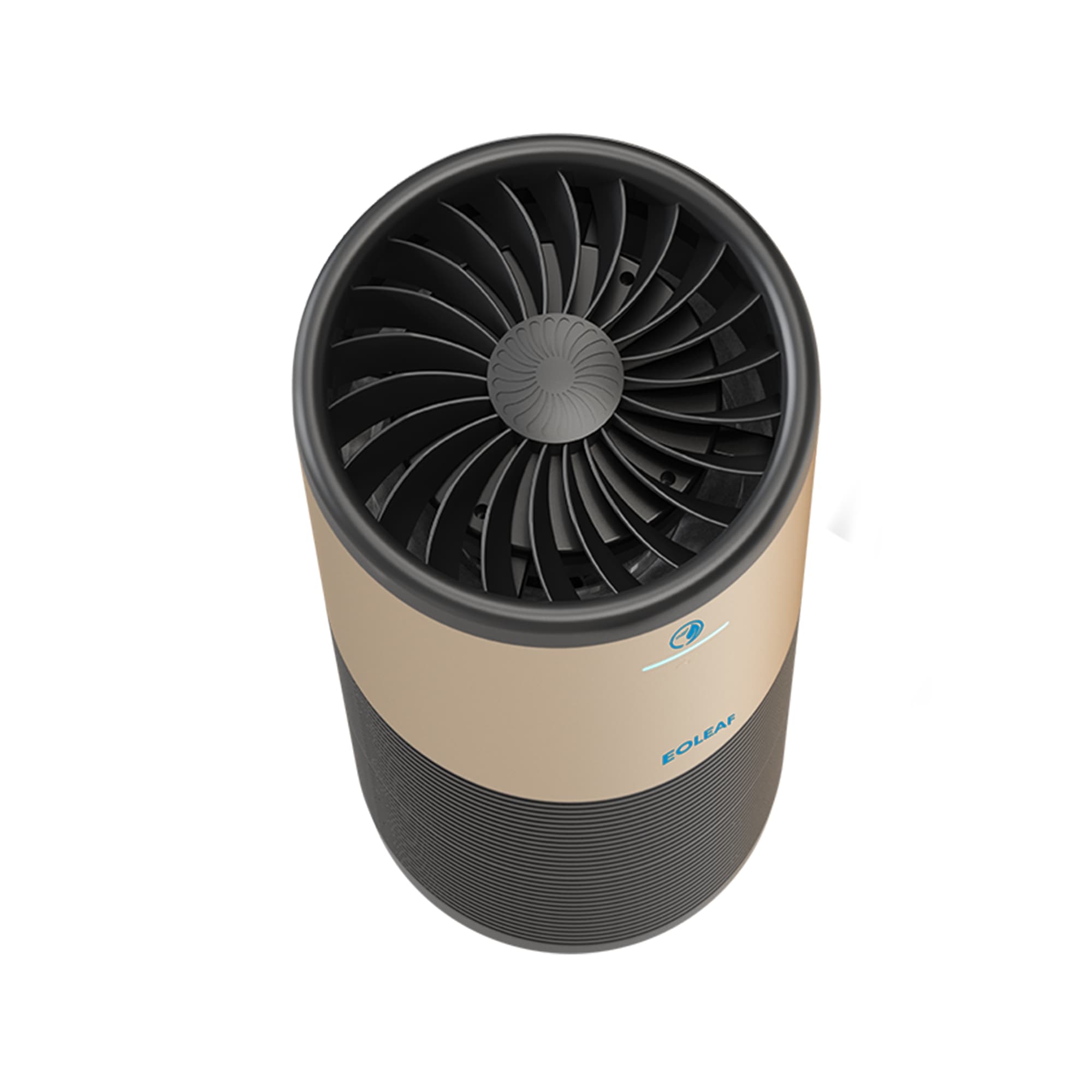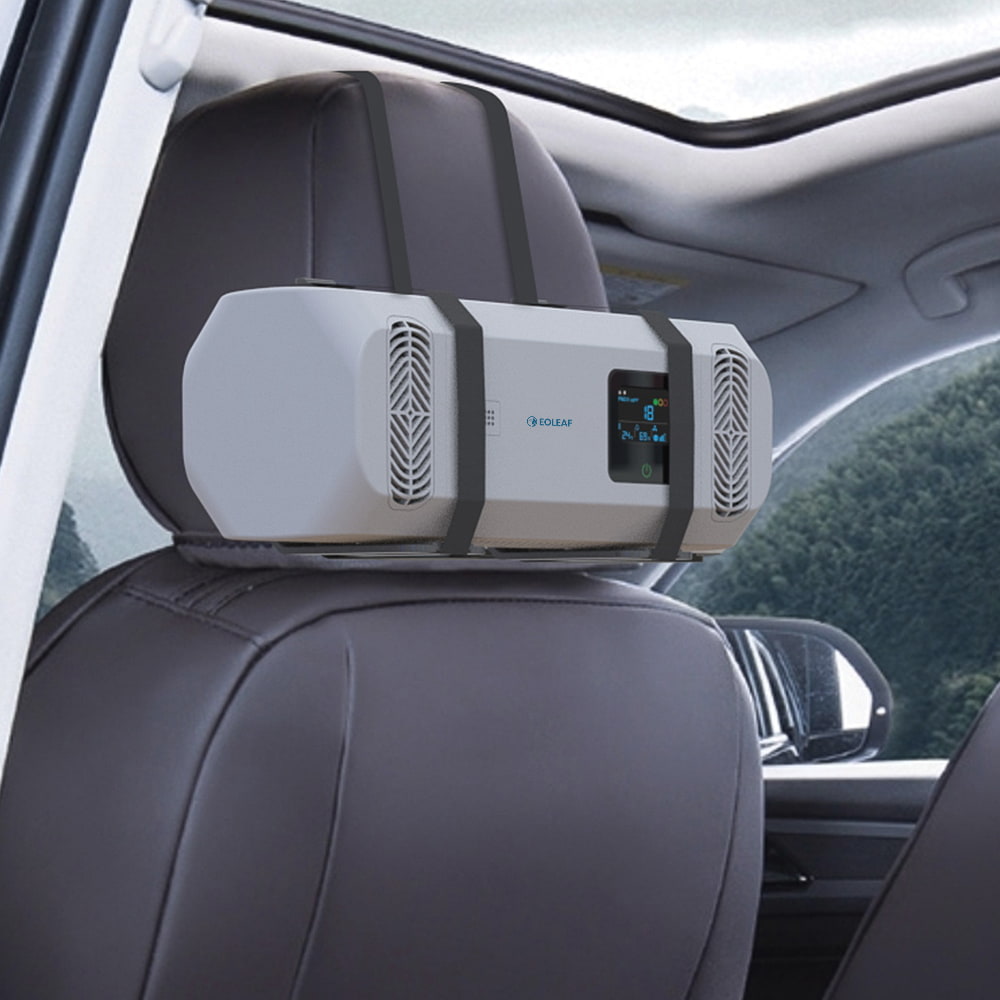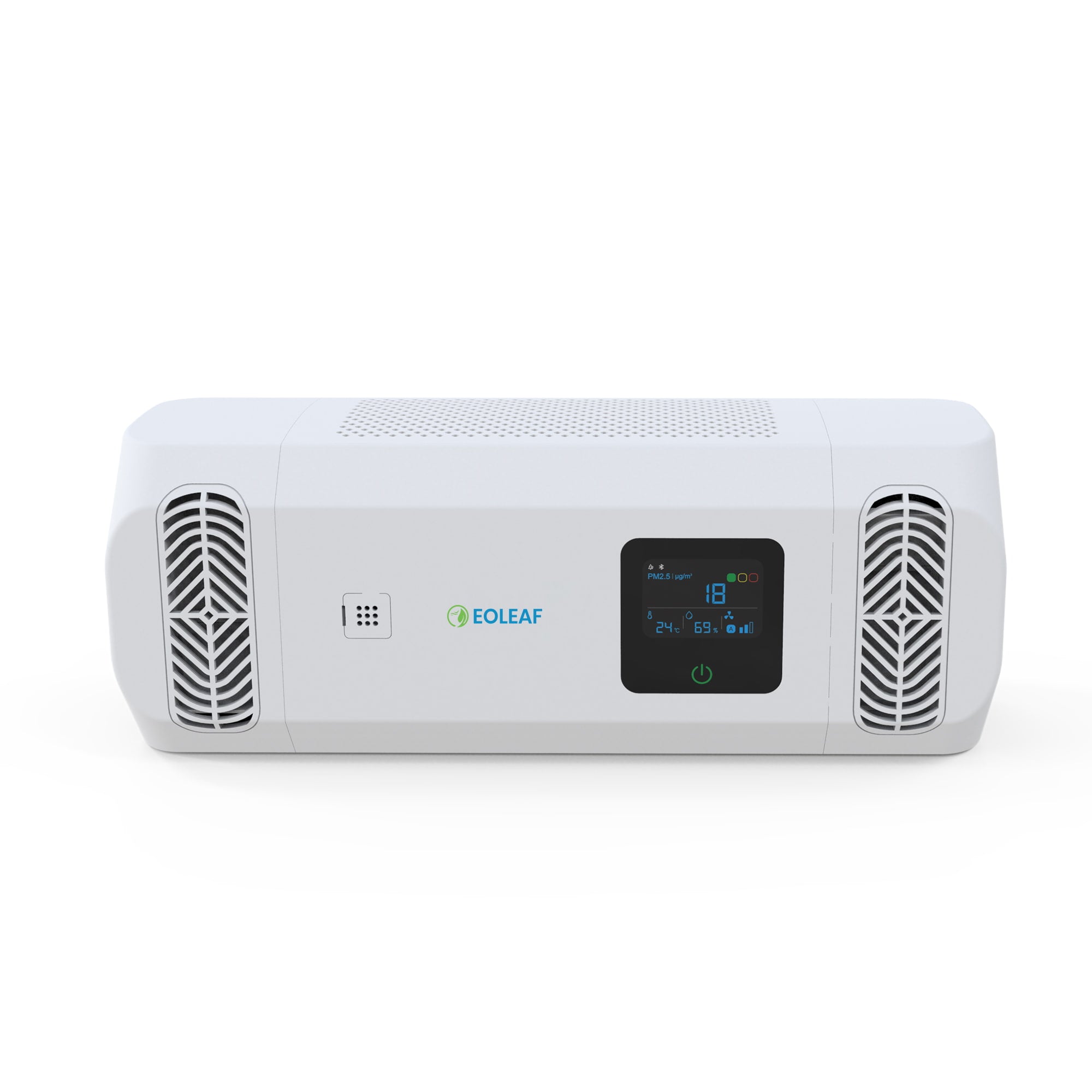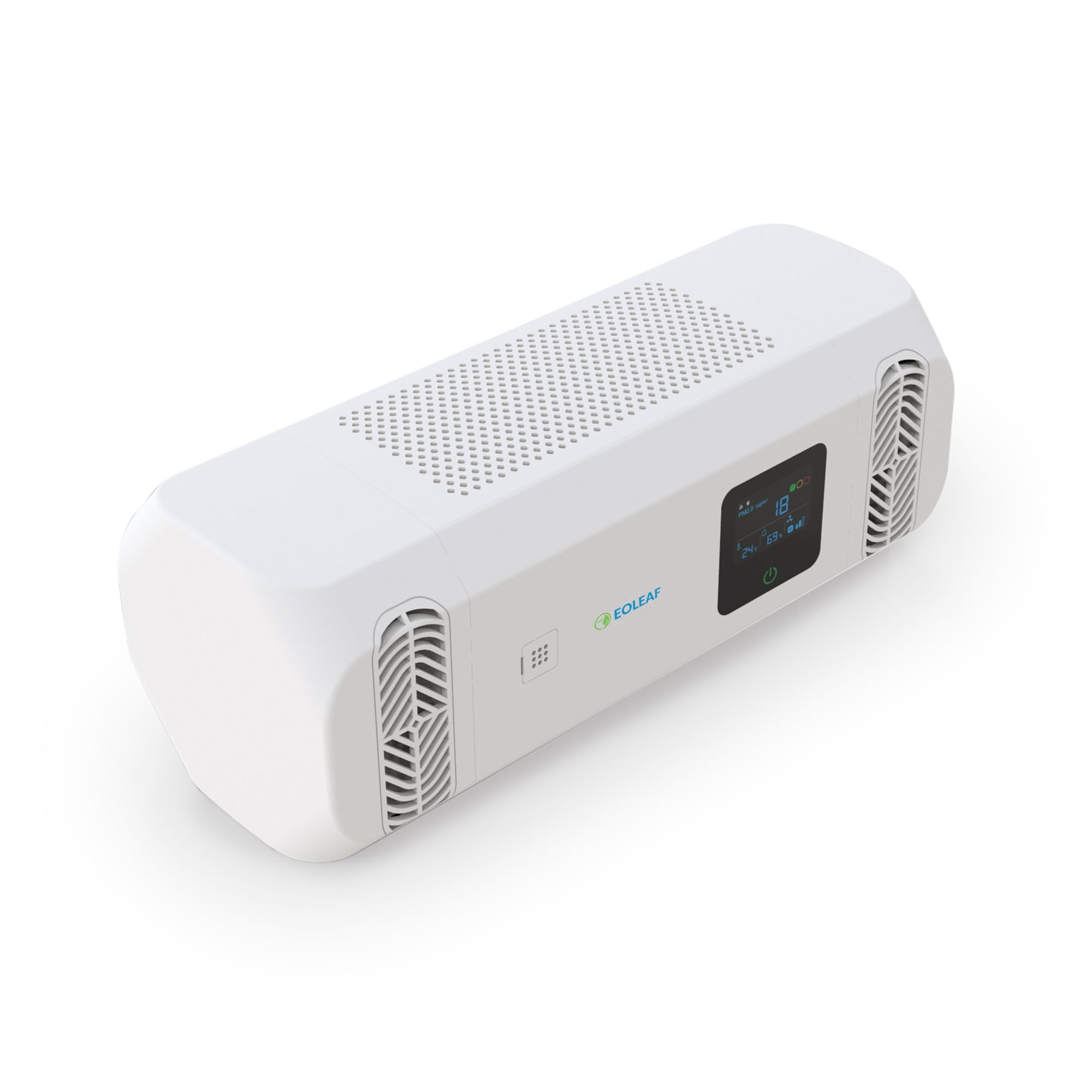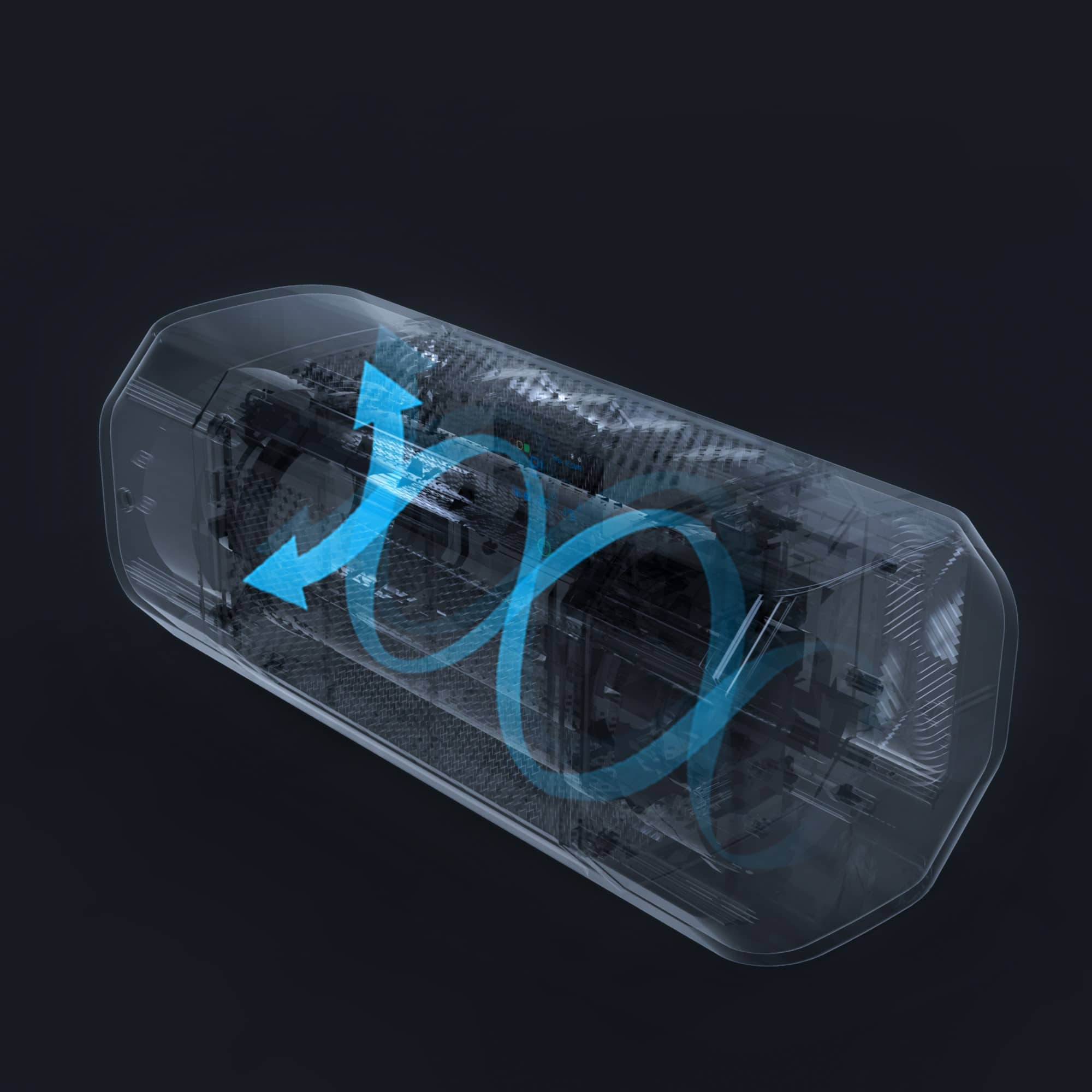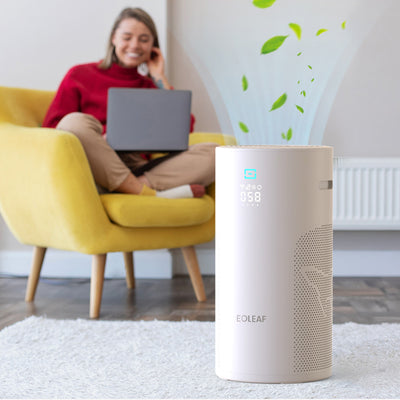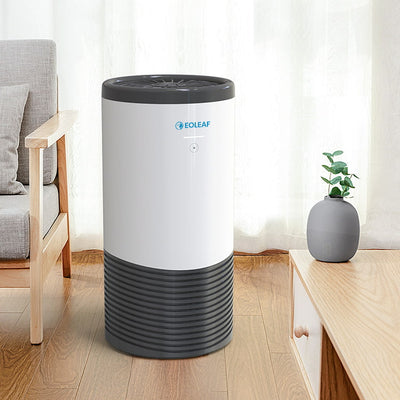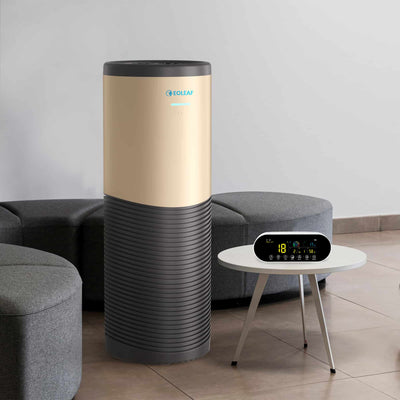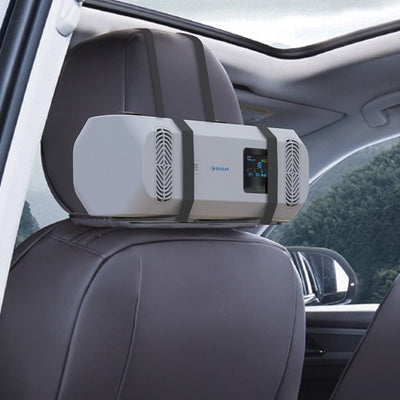The ultimate guide to choosing the best air purifier for your boat
Robert N. Rose once famously said, “Ships are the nearest thing to dreams that hands have ever made.” It is not surprising that this quote holds true for many individuals: globally, there are an estimated 50 million recreational boats, one million of which are added to our seas each year1. Although this number may seem small compared to the number of cars on the road, boating still emits a significant amount of air pollution that impacts the health of boat users and land-dwellers alike. How much and which types of air pollution are emitted by boats? How can it impact our health? Can an air purifier for boats help? Read on to learn more.

Air pollution on the high seas
Maritime transportation is notorious for its emissions. Shipping produces an enormous quantity of fine particle pollution, often upwards of 20 to 30% of local particulate matter (PM2.5) and 80% of nitrogen oxides (NOx) and sulphur dioxide (SO2) concentrations. Furthermore, and more concerningly, maritime air pollution is fairly unregulated, and there are few reports, modelling studies, and measurement data available on the subject2.
Recreational boats may not emit the same levels of air pollution, but nearly all recreational boats use an internal combustion engine for propulsion. In the United States alone, motorized recreational boats consume 1,503 million gallons (5,689 million liters) of gasoline and diesel fuel per year, all of which emits 13.6 million metric tons of CO2 annually. To put this in perspective, that’s the equivalent of 40% of aircraft emissions generated by United Airlines alone, the world’s second largest airline3.
The above statistics present a challenge for recreational boat owners and users, especially when it comes to protecting themselves from the dangers of boat emissions.
Why do boats need air purification?
Understanding air quality challenges on boats
Living in a small space like a boat may present challenges (not unlike those residing in a recreational vehicle or a small apartment). However, boats are active, near-constant emitters of harmful air pollutants that may damage our health.
As mentioned above, nearly all recreational boats use internal combustion engines that consume either gasoline or diesel fuel. These types of fuel emit particulate matter (specifically PM2.5) and chemical pollutants like ozone. Exposure to these types of air pollution have severe effects on health.
While all human beings suffer the consequences, the most at-risk groups include infants and children, pregnant women, elderly individuals, and immunocompromised individuals. According to a 2020 study, emissions from gas and diesel fuels cause more than 200,000 premature deaths annually (115,000 for gasoline and 122,000 for diesel), as seen below.

Source 4
Boat interiors also emit volatile organic compounds (VOCs) and chemicals that pose further risks to health. Boating paints, adhesives, cleaning and renovation products, and new furnishings (textiles, couches, wood furniture) all release VOCs including formaldehyde, a known carcinogen, into your space for up to two years.
Additionally, boats, like any other indoor space where we spend our time, accumulate allergens like dust, pollen, pet hair and dander (if applicable), unpleasant odours like those generated by kitchens or bathrooms, and mold. Mold, which is very irritating to the respiratory tract, is particularly common on boats and yachts as high-humidity environments create breeding grounds for fungi.
Health risks associated with poor air quality on boats
Exposure in the short- and long-term to all types of air pollution found on boats has adverse effects on health. Some of them include:
- PM: health effects in both the short- and long-term including premature mortality, increased risk of being admitted to the hospital and premature death for people with heart and lung conditions, bronchitis (acute and chronic), increased incidence of asthma attacks, difficulties breathing, aggravation of existing respiratory conditions like asthma and COPD, stunted growth and lung function in children, and increased risk of lung cancer
- Ozone: irritation of the respiratory system, coughing, headaches, reduced lung capacity and shortness of breath, chest pain, increased incidence and aggravation of respiratory illnesses, increased risk of hospitalization for respiratory illness symptoms, increased incidence of asthma attacks, and increased risk of premature death
- VOCs: eye, nose, and throat irritation; headaches; loss of coordination; nausea; and nervous system, kidney, or liver damage

How does an air purifier for boats work?
Key filtration technologies for marine environments
When choosing an air purifier for boats, it is important to choose one that will filter all types of pollution. Since boating and yacht users come in contact with all three types of air pollution (fine particle pollution, chemical pollution, and biological pollution), it is essential that an air purifier be capable of combating all of these in order to obtain the cleanest indoor air possible.
HEPA filters
Filters that are certified HEPA, or High-Efficiency Particulate Air, are guaranteed and third-party tested for efficiency. There are multiple grades of HEPA, but it is recommended to purchase an air purifier equipped with a HEPA filter that is medical-grade. Eoleaf devices are all equipped with medical-grade, HEPA H13-certified filters, a certification that guarantees the removal of 99.97% of all pollutants down to a size of 0.01 microns in a single pass. These filters are designed to combat harmful and irritating fine particles like PM10, PM2.5, and PM0.1.
It is worth noting that in order for a HEPA filter to be guaranteed to remove a certain amount of pollutants, it must be certified! Buyer beware if you do not see anything mentioning “certified” or “certification” in regards to your HEPA filter. Many filters claim to be HEPA, HEPA-type, or similar, all without being properly certified.
Activated carbon filters
Although HEPA filters are extremely effective at removing fine particles, they do not target other types of pollution. Chemical pollution like ozone, VOCs, and carbon monoxide (to name a few), as well as unpleasant odours, are targeted and filtered by activated carbon filters. An air purifier for boats and yachts should, at the very least, come equipped with a HEPA-certified filter and an activated carbon filter.
Not all activated carbon filters are created equal, though. Some are more high-quality than others, and before making your purchase, it is essential to ask an air purifier’s manufacturer for the weight of the activated carbon filter. The heavier the activated carbon filter, the more effectively and durably it filters pollutants. Eoleaf’s filters are high quality and heavy and contain the following amounts of activated carbon per filter:
- AltaPur 700: 1280 grams
- TeraPur 600: 640 grams
- NeoPur 400: 400 grams
- PurCar: 30 grams
Other essential filtration technologies
Ideally, an air purifier should contain more than just the two above-mentioned technologies in order to truly tackle all of the air pollutants found on boats and in marine environments. Eoleaf devices come with 8 different air filtration technologies, making them some of the most comprehensive air purifiers on the market!
One of the most important technologies that should be included in all air purifiers - but rarely is - is UVC sterilisation. This essential technology is not only useful in removing airborne pathogens (germs including viruses and bacteria) that may be found on deck, but it sterilizes your filter. Sterilization of your filter is crucial: your filter stores all of the pollutants collected by your air purifier, and they do not just disappear! This means that, ultimately, your filter becomes a hotbed for germs and other pollutants, a problem which is particularly problematic when you perform filter changes. With UVC sterilisation technologies, the danger of recontamination is nearly eliminated. All Eoleaf air purifiers are equipped with this technology.
Eoleaf devices are 2-in-1 air purifiers and ionizers. Ionizers are designed to fight against fine particle pollution, especially those found in smoke and dust. Studies have shown that ionizers decrease particulate matter concentration by 79.7% for PM2.5 and 80.4% for PM10, proving to be an important ally in removing any fine particles left behind by a HEPA filter5.
Finally, Eoleaf air purifiers also offer photocatalysis technologies. Serving as another layer of protection against VOCs and chemical pollution, photocatalysis technologies do an excellent job at targeting some of the most dangerous VOCs including nitrogen oxides, carbon dioxide (CO2), carbon monoxide (CO), formaldehyde, ethanol, butane, toluene, benzene, and acetone.

Benefits of installing an air purifier on your boat
Improved health and comfort
When living in or using a small space like a boat cabin, reducing potential discomforts makes a big difference in well-being. A high-quality air purifier contributes significantly to improved daily comfort by removing allergens, bacteria, and viruses, to name a few. Furthermore, an air purifier with a high-quality activated carbon filter will filter unpleasant smells, especially musty and stale odours that you may find inside your boat or yacht. Fresh, filtered air will help you sleep better and enjoy the time you spend on your boat.
Protection of boat interiors and equipment
An air purifier that targets mold spores will reduce its ability to propagate. When airborne mold spores are absorbed before they have a chance to spread, your boat interior and equipment found on board will be protected from mold damage. This is particularly important in a marine environment where humidity levels are high, posing a risk to all fabrics, upholstery, and wood.
Enhancing energy efficiency
Another benefit of installing an air purifier for boats is that it will make you less dependent on your ventilation systems on board. Ventilation still remains extremely important, but an air purifier helps fight pollutants found in stale air, protecting your health.

How to choose the best air purifier for your boat
Key factors to consider
When choosing the best air purifier for your boat, a few important factors should be kept in mind:
- Coverage area - how big is your boat or yacht’s cabin? Air purifiers are designed to treat the air in areas of a maximum size. Be sure to choose an air purifier that is sized properly to your space.
- Maintenance - how often do you need to replace the device’s filters? This varies significantly between brands and models. The general rule is that lower-quality filters require more frequent filter changes, and vice versa. Eoleaf devices are equipped with high-quality filters that only need changing once per year.
- Power consumption - are your boat’s power outlets adapted to an air purifier energy usage? Be sure to verify your boat’s power supply before making your purchase.
- Noise levels - is the air purifier that you have in mind noisy? For optimal tranquility on board, choose an air purifier that is powerful yet quiet.
Top features to look for
As mentioned above, when looking for an air purifier for your boat, choose one that will do it all: Eoleaf air purifiers remove all types of air pollution in a marine environment. Seek out an air purifier with a multi-layer filter designed to combat all three main types of air pollution.
Another bonus is to find a smart device. Smart air purifiers offer features that make your life easier including air quality monitoring in real-time, smartphone and app compatibility, smart scheduling, voice controls, and gesture controls, to name a few. Eoleaf devices offer all these and more, providing a seamless and easy user experience!
Installation and maintenance tips for air purifiers for boats
Best placement locations for maximum efficiency
Proper placement of your air purifier can drastically increase its efficiency and ability to remove indoor air pollution. Installation in high-traffic areas like living rooms and bedrooms is ideal. The closer to potential sources of air pollution the better, such as in close proximity to the engine room and kitchen spaces. In boats, for the longevity of your air purifier and to avoid damage, it is recommended to avoid installation in areas that may experience salt water exposure. Also try to avoid placing your device too close to fixtures or furniture in order to optimize air flow.
Maintenance guidelines for long-term performance
Regular filter replacements are one of the best ways to ensure long-term performance of your air purifier! Be sure to follow a regular filter replacement schedule according to the device manufacturer’s recommendations. Eoleaf devices require filter changes only once every 12 months on average.
Pro tip: extend the lifespan of your filter by removing it once a month and leaving it out in the sun! This helps dry any moisture that may have accumulated in your filter.
The best air purifiers for boats
Why Eoleaf air purifiers stand out for boats?
Eoleaf devices provide some of the best air filtration on the air purification market. With their HEPA H13-certified filters, heavy and durable activated carbon filters, and 6 other air filtration technologies, they provide incredibly comprehensive air filtration designed to remove all types of air pollution found in boats and marine environments. They are energy-efficient and quiet, making them perfect for on board use. Our devices have been trusted by boat and yacht owners, maritime professionals, and land-dwellers all around the globe.
Purchase directly from Eoleaf for exclusive benefits
Do you have specific questions regarding your air purification needs? The Eoleaf team is here to help! Our team consists of air purification experts that use a scientific approach. We use the most up-to-date air pollution data available from the most recent scientific studies. We are here to make custom recommendations based on your specific needs and air pollution concerns in your boat. Reach out to our team anytime for more information.

Resources
1 Stocker, T. (2024, February 7). The true carbon cost of sailing – and why going electric could be less green than you think. Yachting Monthly. https://www.yachtingmonthly.com/specials/the-true-carbon-cost-of-sailing-and-why-going-electric-could-be-less-green-than-you-think-96666
2 International shipping should cut air pollutants and greenhouse gases together. European Environment Agency. (2016, June 21). https://www.eea.europa.eu/highlights/international-shipping-should-cut-air
3 Hume, D. (2022, June 6). Recreational Boats: Low-Hanging Fruit for Decarbonization. The Liquid Grid. https://theliquidgrid.com/recreational-boats-decarbonization/
4 Shultz, D. (2020), The climate and health impacts of gasoline and diesel emissions, Eos, 101, https://doi.org/10.1029/2020EO142849. Published on 28 April 2020.
5 Gupta, N., Agarwal, A.K., Singhal, R. et al. A Comparative Assessment of the Some Commercially Available Portable Bipolar Air Ionizers Particulate Pollutants (PM2.5, PM10) Removal Efficacies and Potential Byproduct Ozone Emission. Aerosol Sci Eng 7, 315–324 (2023). doi:10.1007/s41810-023-00182-9

